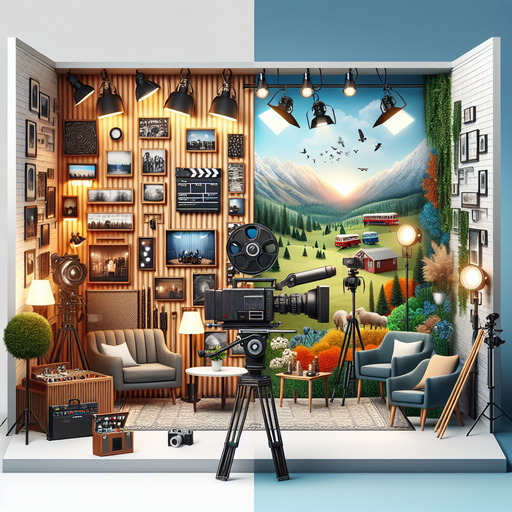
-
Table of Contents
Discover essential tips for choosing the perfect videography background to elevate your projects! Learn more here.
Introduction
In the realm of videography, the background plays a pivotal role in setting the tone, mood, and overall aesthetic of a video. Whether you’re shooting a professional interview, a creative short film, or a corporate presentation, the right background can enhance the visual appeal and effectiveness of your content. Choosing the appropriate background involves considering various factors such as the subject matter, lighting conditions, color schemes, and the intended message of the video. This guide provides essential tips for selecting the perfect videography background, ensuring that your visuals are both captivating and coherent.
Tips For Choosing The Right Videography Background
When it comes to creating compelling video content, the background you choose plays a crucial role in setting the tone, enhancing the narrative, and engaging your audience. Selecting the right videography background is not merely a matter of aesthetics; it involves a thoughtful consideration of various factors that can significantly impact the overall quality and effectiveness of your video. To help you make an informed decision, here are some essential tips for choosing the right videography background.
First and foremost, consider the purpose and theme of your video. The background should complement the message you aim to convey. For instance, a corporate video might benefit from a clean, professional setting such as an office or a conference room, while a lifestyle vlog could thrive in a more casual, homey environment. Aligning the background with the video’s theme ensures coherence and helps in reinforcing the intended message.
Equally important is the color scheme of the background. Colors can evoke specific emotions and set the mood for your video. Neutral colors like white, gray, or beige are versatile and can work well in various contexts, providing a clean and distraction-free backdrop. On the other hand, vibrant colors can add energy and dynamism but should be used judiciously to avoid overwhelming the viewer. Additionally, consider the contrast between the background and the subject to ensure that the subject stands out clearly.
Lighting is another critical factor to consider when choosing a videography background. Natural light can create a soft, flattering effect, but it can be unpredictable and change throughout the day. Artificial lighting, such as studio lights, offers more control and consistency. Regardless of the light source, ensure that the background is well-lit to avoid shadows and dark spots that can detract from the video’s quality. Moreover, be mindful of reflections and glare, especially if the background includes shiny surfaces or windows.
The texture and depth of the background can also add visual interest to your video. A flat, plain wall might be too monotonous, whereas a background with some texture, such as exposed brick or wooden panels, can add character and depth. However, avoid overly busy or cluttered backgrounds that can distract the viewer from the main subject. Striking the right balance between simplicity and visual interest is key.
Practical considerations, such as the size and layout of the filming location, should not be overlooked. Ensure that the background fits within the frame and complements the composition of your shots. A background that is too large or too small can disrupt the visual harmony of the video. Additionally, consider the acoustics of the location, as backgrounds with hard surfaces can cause echoes, while softer materials can help absorb sound and improve audio quality.
Lastly, think about the potential for branding and personalization. Incorporating elements that reflect your brand’s identity, such as logos, colors, or specific props, can enhance brand recognition and make your video more memorable. However, this should be done subtly to avoid appearing overly promotional.
In conclusion, choosing the right videography background involves a careful balance of aesthetics, practicality, and thematic alignment. By considering factors such as purpose, color scheme, lighting, texture, and branding, you can create a background that not only enhances the visual appeal of your video but also effectively supports and amplifies your message. With thoughtful planning and attention to detail, your videography background can become a powerful tool in creating engaging and impactful video content.
Q&A
1. **What are some tips for choosing the right background for videography?**
– **Consider the Subject Matter:** Ensure the background complements the subject and does not distract from it.
– **Lighting:** Choose a background that works well with your lighting setup to avoid harsh shadows or overexposure.
– **Color and Contrast:** Select colors that contrast well with the subject to make them stand out.
– **Texture and Patterns:** Avoid overly busy patterns that can be distracting; simple textures often work best.
– **Depth and Space:** A background with some depth can add dimension to your video, rather than a flat, plain backdrop.
– **Relevance:** Make sure the background is relevant to the content and adds to the storytelling.
– **Practicality:** Consider the ease of setting up and changing the background if needed.
– **Consistency:** Maintain a consistent background style if shooting multiple videos for a series.